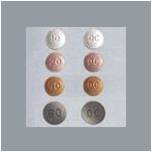

What is OxyContin?
OxyContin is the brand name for oxycodone hydrochloride, an opioid (narcotic) analgesic (pain reliever). OxyContin is a controlled-release oral formulation of oxycodone hydrochloride. It is available by prescription only and is used to treat moderate to severe pain when around-the-clock pain relief is needed for an extended period of time. It works by changing the way the brain and nervous system respond to pain.
What does it look like?
OxyContin is available in tablet form in 8 doses: 10 mg 15 mg 20 mg 30 mg 40 mg 60 mg* 80 mg* 160 mg*.
How is it used?
As pain medication, OxyContin is taken every 12 hours because the tablets contain a controlled, time-release formulation of the medication. Most pain medications must be taken every three to six hours. OxyContin abusers remove the sustained-release coating to get a rapid release of the medication, causing a rush of euphoria similar to heroin.
What are its short-term effects?
The most serious risk associated with opioids, including OxyContin, is respiratory depression — slowed breathing. Common opioid side effects are constipation, nausea, sedation, dizziness, vomiting, headache, dry mouth, sweating, mood changes, flushing, loss of appetite, and weakness. Taking a large single dose of an opioid could cause severe respiratory depression — slowed or difficulty breathing that can lead to death.
What are its long-term effects?
Chronic use of opioids can result in tolerance for the drugs, which means that users must take higher doses to achieve the same initial effects. Long-term use also can lead to physical dependence and addiction — the body adapts to the presence of the drug, and withdrawal symptoms occur if use is reduced or stopped. Taken exactly as prescribed, opioids can be used to manage pain effectively.
What is its federal classification?
Schedule II
Source: National Institute on Drug Abuse (NIDA); Drug Enforcement Administration (DEA)